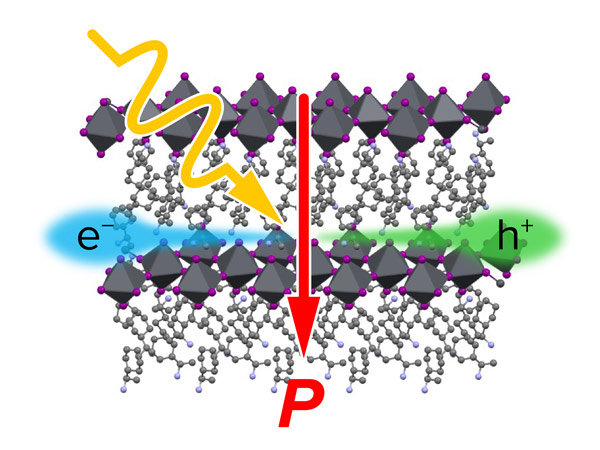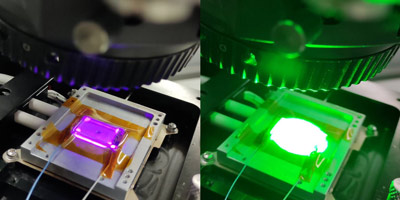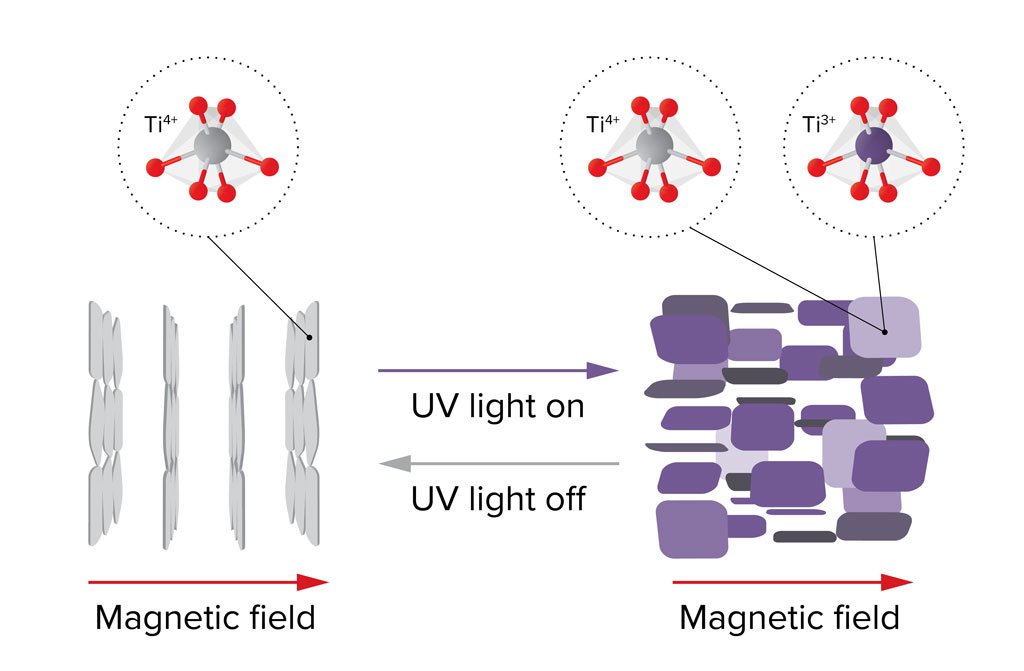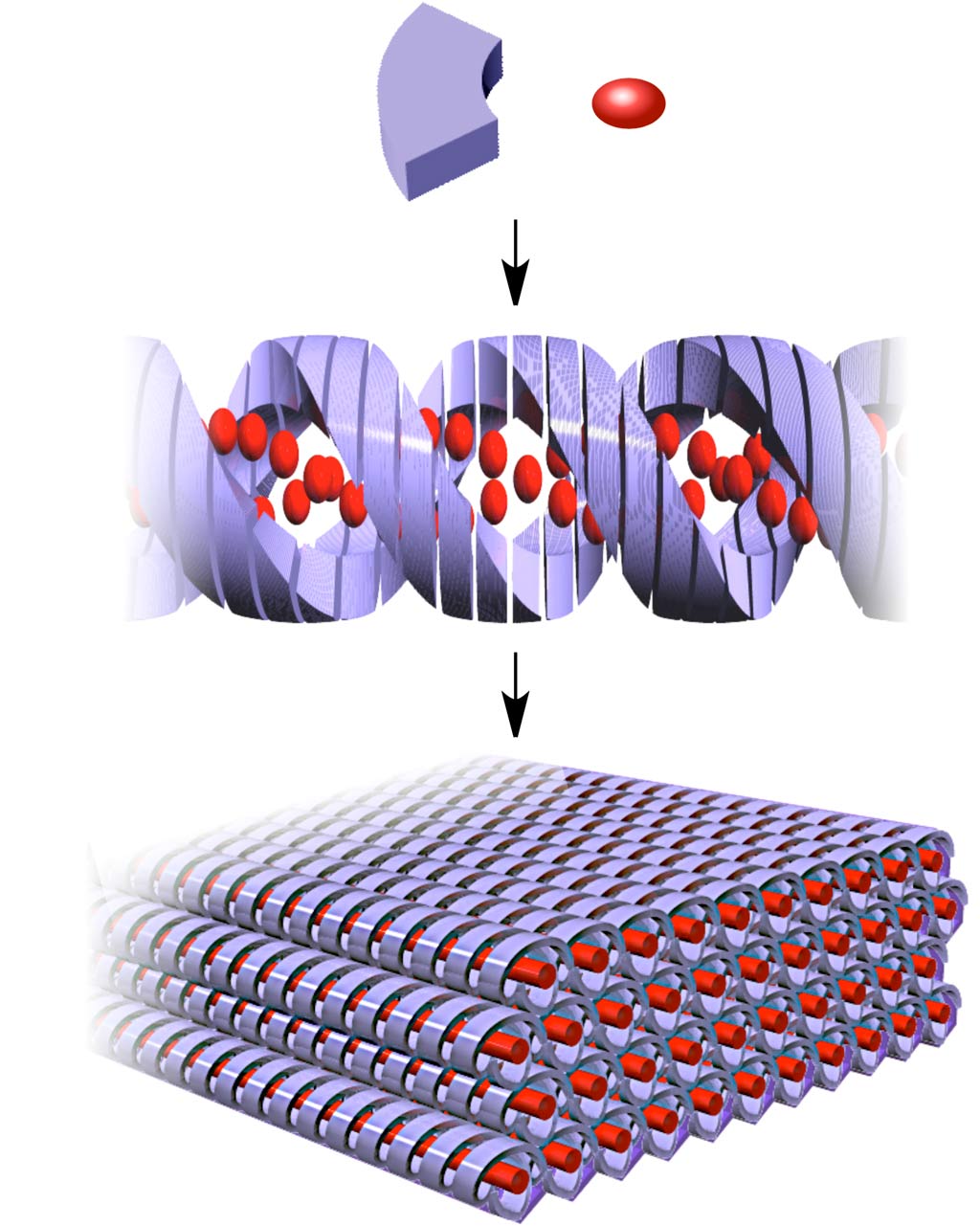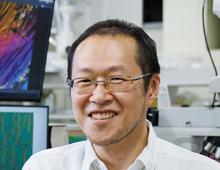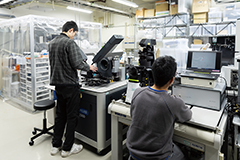
Our team is mainly working on functionality of soft-matter systems from the viewpoints of physical experiments and analyses. In our research unit, particular attention is paid to liquid crystals due to their self-organizability leading to multifarious structures in which many interesting physical phenomena emerge. Our interest also covers potential applications of such soft-matter systems towards optical/electronic or chemical devices. For example, 1. Ferroelectric interactions and switching mechanisms in novel liquid crystalline ferroelectric materials, 2. Chirality related phenomena - origin and control of emergence, as well as applications of superstructure chirality in self-organized soft-matter systems, 3. Novel optical/electronic devices based on self-organized soft-matter systems.
Electric-Field Driven Ferroelectric Micro-Droplets
The recently-found ferroelectric nematics have been attracting much attention due to its proper ferroelectricity with highly fluidic nature. This state is enthusiastically investigated for its possibility towards epoch-making applications, as well as for fundamental science issues beneath the emergence of unprecedented physical properties, such as large apparent permittivity. Our group recently found a complex dynamic behavior, in which ferroelectric nematic microdroplets were transformed and dynamically driven by an ac electric field and crawled like some kind of micro creatures. This non-equilibrium phenomenon is resulted from the competition of electrostrictive and piezoelectric effects, and hence the shapes and dynamics of the droplets transit among various states, depending on the field conditions (amplitude, frequency, etc.). Interestingly, these dynamic droplets sometime move collectively like a swarm and thus possess active matter nature. Each individual droplet is considered as a micro-robot, thus named “Febot”.
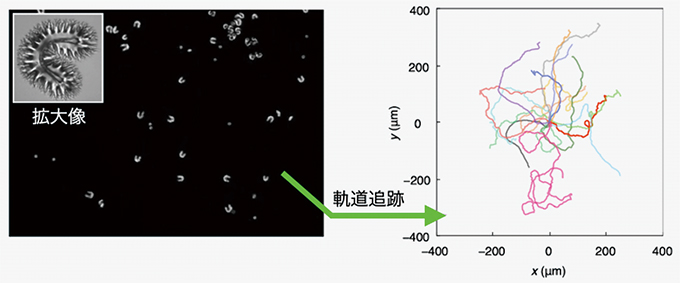
“Febots” in collective motion, and their traces visualized by the motion capturing.
Topology-dependent Lehmann rotation in chiral nematic emulsions
Lehmann rotation is a ‘heat flow’-to-‘motion’ energy conversion effect in liquid crystals, which was found in the end of the 19th century. In spite of the huge effort by physicists for more than 100 years, its physical mechanism has not been clear yet. On the other hand, topology is ubiquitous in liquid crystals which can be treated as continua to understand many other complex physical systems. In this research, it was proven that highly efficient Lehmann rotation is realizable even in emulsion states of a chiral liquid crystal dispersed in a fluorinated oligomer, in which topological diversity is confirmed depending on the droplet size and the strength of chirality. Interestingly, the estimated heat-rotation conversion rate therein significantly depends on these inner topological states of the droplets. This result is not merely important as a key to solve the long-persistent physical problem in Lehmann rotation, but also interesting for fundamental sciences related to topology.

(A) Topological diversity in a chiral nematic emulsion, (B) Lehmann rotation depending on the topological states.

